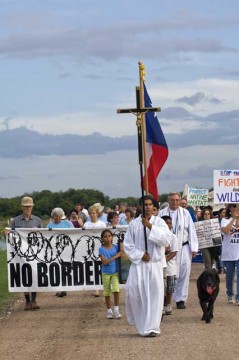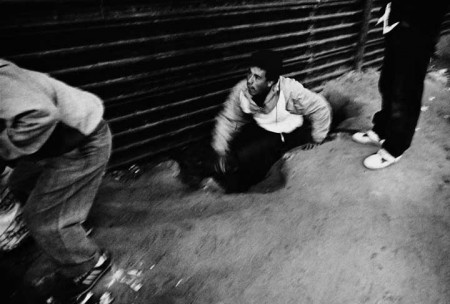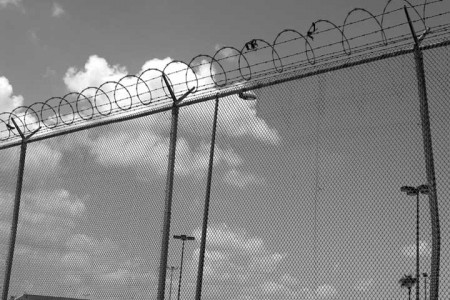The international boundary between Mexico and the United States runs for a total of 3,169 km or 1,969 miles from the Pacific Ocean to the Gulf of Mexico. The border region is something else—a distinctive zone which links citizens of both countries, in a vibrant and complex network of trade, cultural, social and institutional relationships. More than 12 million people from both countries live in the cities and municipalities along the adjacent border states: from San Diego, CA and Tijuana, Baja California in the west to Matamoros, Tamaulipas and Brownsville Texas in the east. According to the US Embassy in Mexico roughly 250 million people legally cross the border every year.
There are other realities as well. The border is the result of a war that took place from 1846 to 1848 which radically changed the geography of both countries. Later during the Mexican Revolution in 1910, one of the first major south north migrations occurred as Mexican refugees sought respite from the bloodshed. On the US side memory tends to be shorter and consists of headlines linked to unauthorized immigration — or news about escalating violence in the illicit realms of arms and drugs trafficking.
The construction of fences and walls are potent symbols, but they have not deterred the poor who emigrate in search of work, only an ailing economy in the US seems to do that. What the barriers do achieve is to make the immigrant’s journey both more arduous and more perilous, increasing migrant mortality rates as the routes shift away from urban centers to lonely mountainous or desert crossings.
A study of migrant mortality (maps) done by the Center for Immigration Research at the University of Houston illustrates the geographic location of mortality hotspots in 2001 by cause of death — from homicide to traffic accidents to environmental exposure. Deaths from exposure in the desert had already begun skyrocketing in the year preceding the September 11th attacks.
A PBS documentary, Death in the Desert, in 2004 called attention to that year’s 271 unauthorized migrant deaths in the AZ. By far the deadliest crossing corridor is the stretch between New Mexico and the eastern edge of Yuma Country AZ where the border patrol estimates about 1,137 deaths between 2000 and 2007.
Since the creation of Homeland security the mission of deterring unauthorized immigration has merged with the war on drugs and the war on terror. And yet the most visible impact thus far has been a devastating increase in violence– primarily in Mexico. In Juarez last year, the violence generated by conflict related to the drug economy took 1,600 lives. The fear on the Mexican side is that the war is escalating and reaching new levels of ruthlessness. On the US side the fear is that the conflict will spread into US territory too.

A coalition of environmentalists, business owners, and community organizations protest the border fence in McAllen, Texas.
And yet despite such fears the people who live closest to the border do not want fences or walls built. In Texas an outspoken coalition of environmentalists, business leaders, and local community groups oppose the building of border walls arguing that they increase rather than decrease insecurity, have a chilling effect on commerce and do not deter migrants determined to come to the US. The Texas wall cuts through the Brownsville campus of the University of Texas, through a corridor of wildlife preserves including the Lower Rio Grande National Wildlife Refuge and divides animal habitats that impact the survival of migrating species as well as the ecotourism upon which the region relies. Despite losing the battle to prevent the building of the wall the Coalition Against the Border Wall in the lower Rio Grande continues to wage an activist campaign against the policy.

